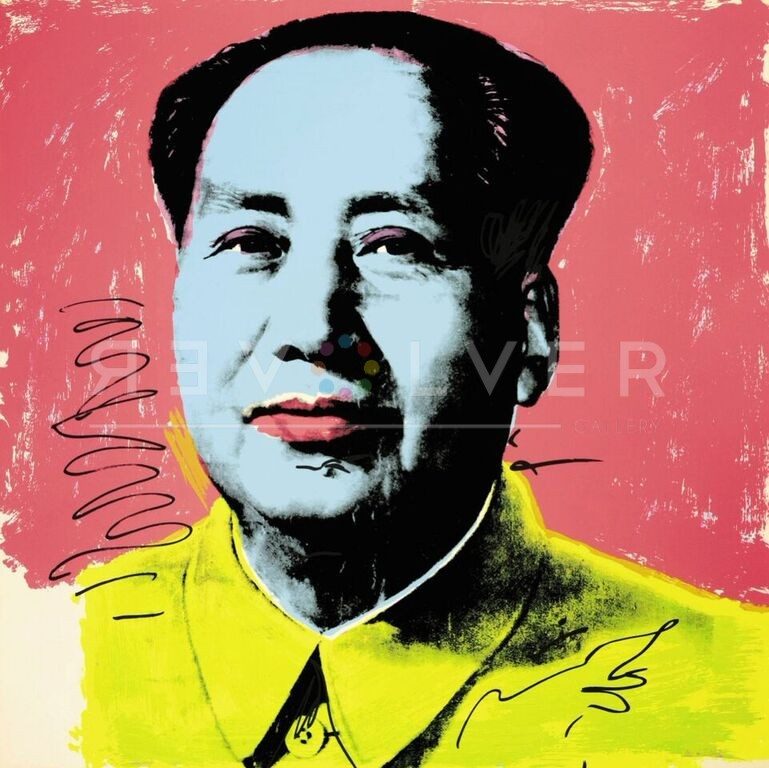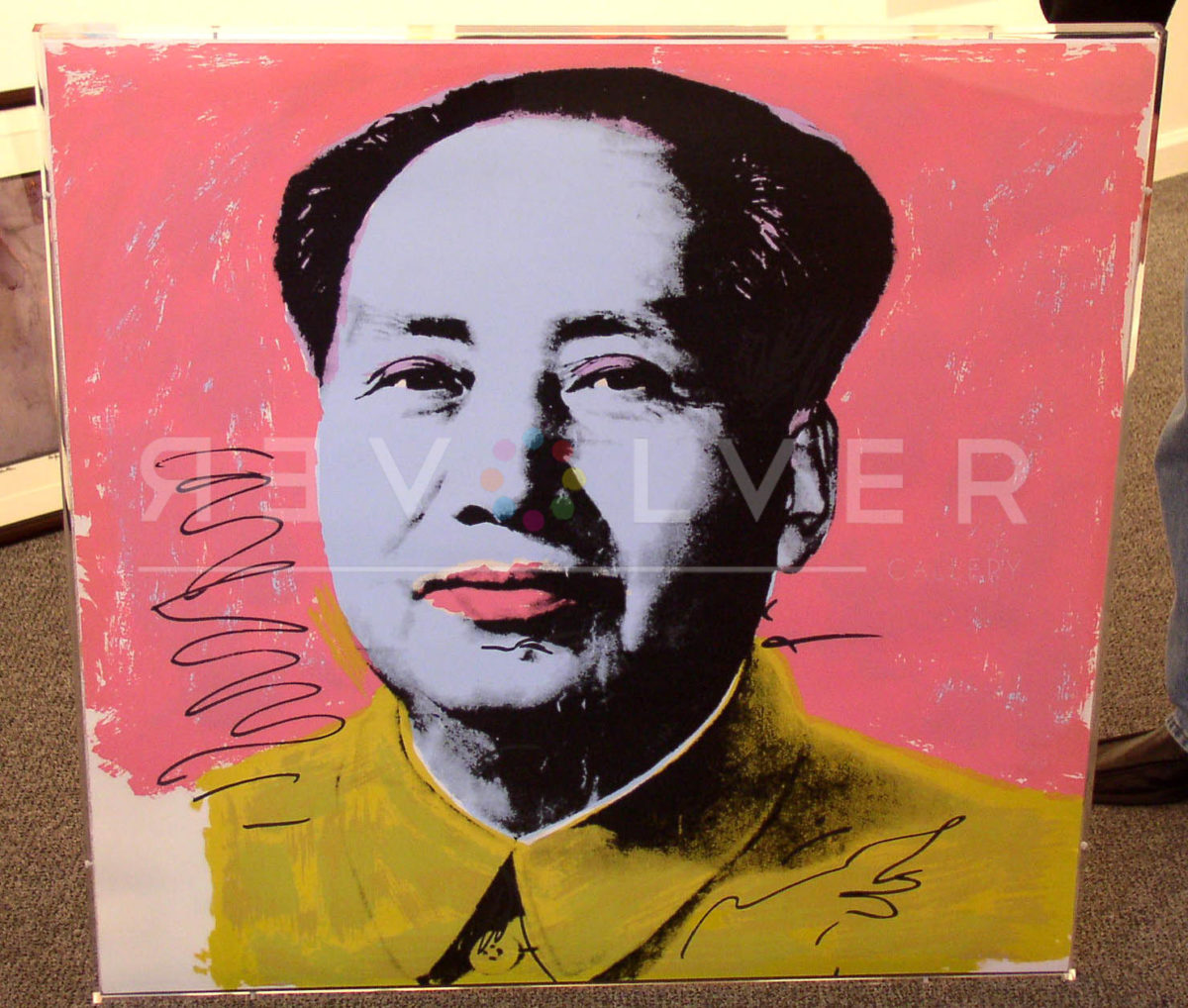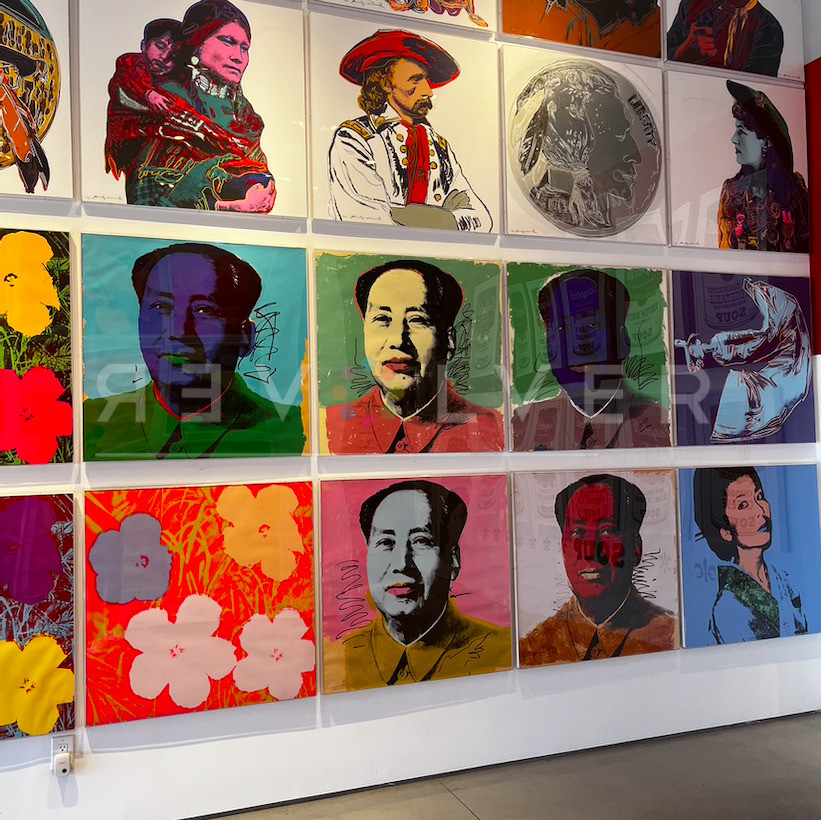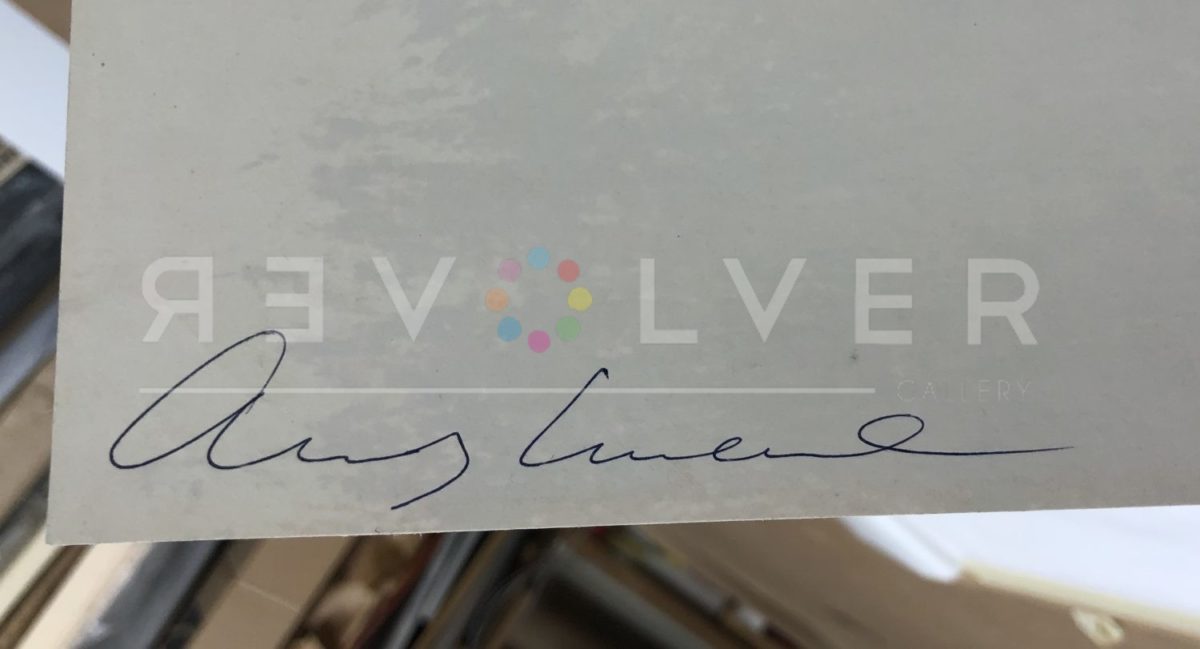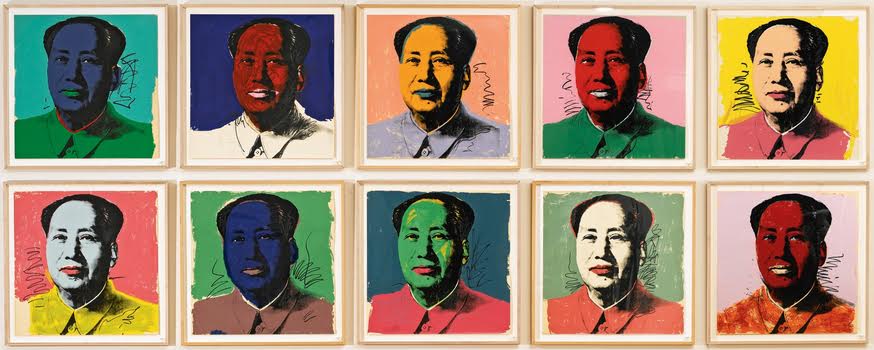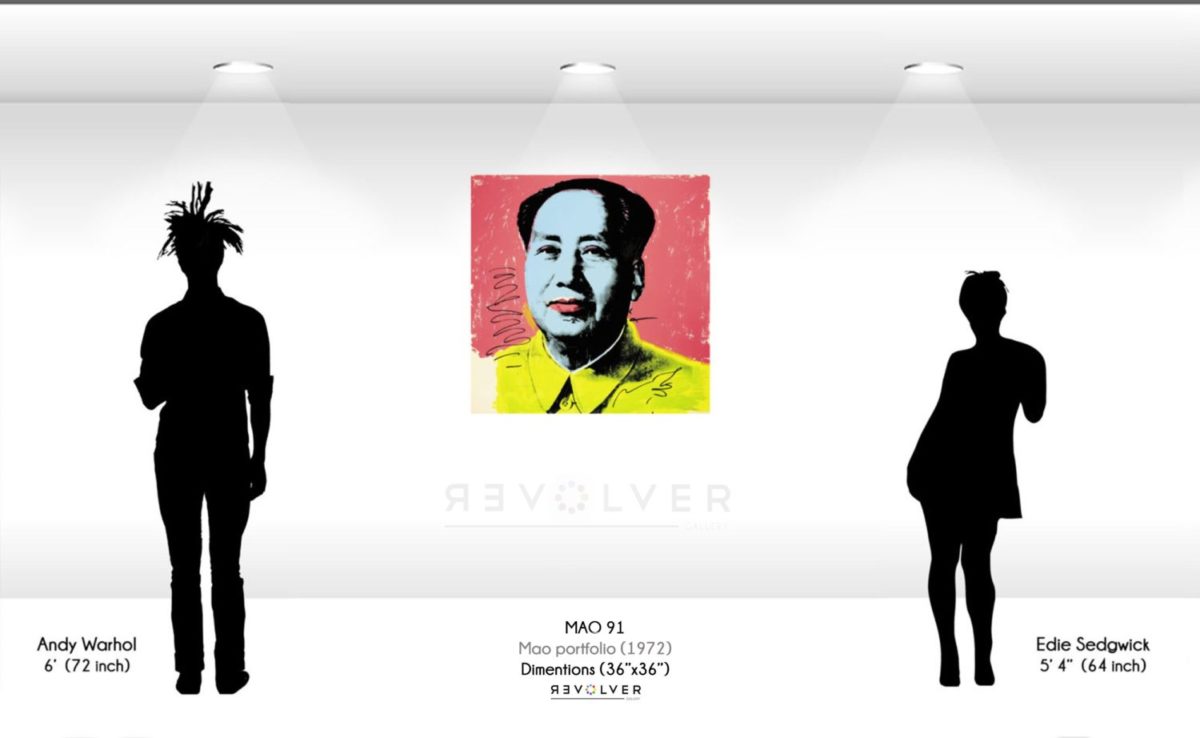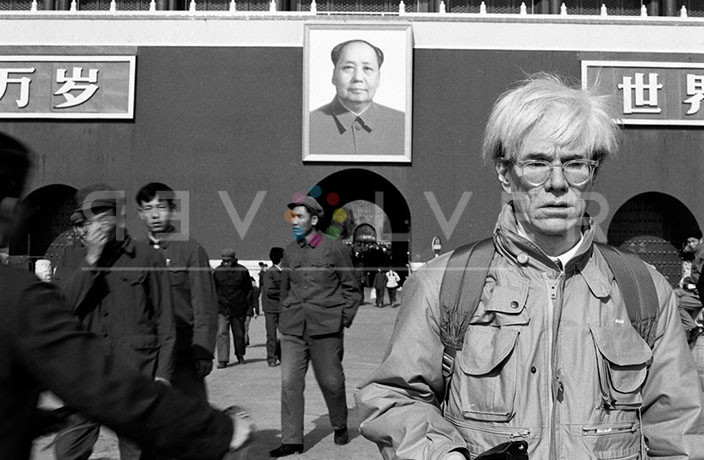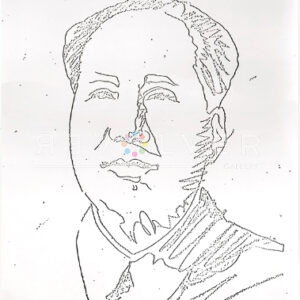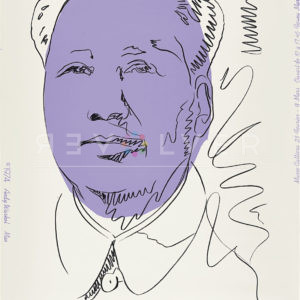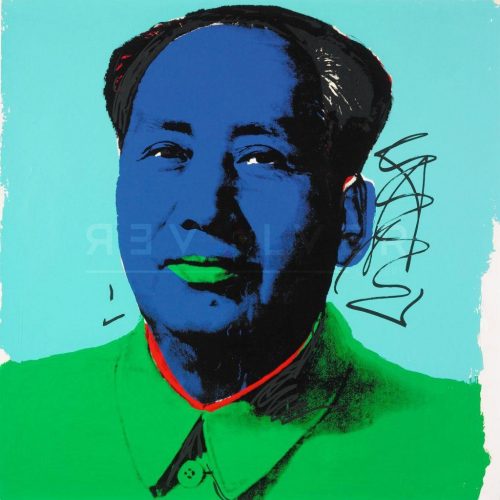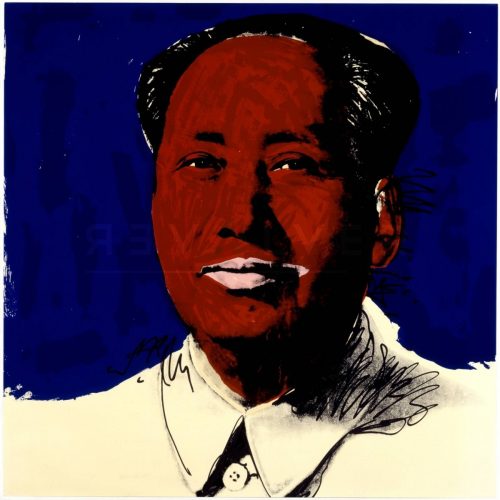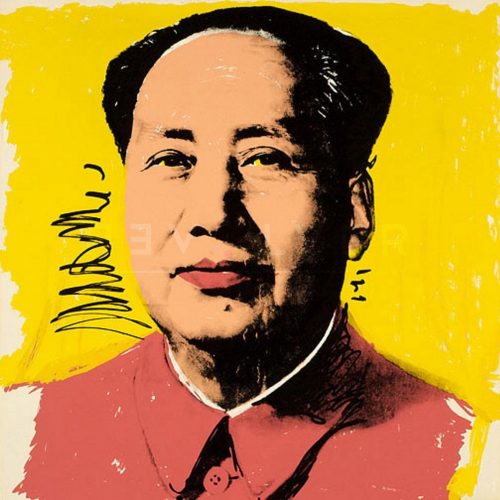“I have been reading so much about China. They’re so nutty. They don’t believe in creativity. The only picture they ever have is of Mao Zedong. It’s great. It looks like silkscreen.” – Andy Warhol. Just one year after this comment, Warhol created Mao 91.
Mao 91 is part of Andy Warhol’s notorious Mao series. Given the subject matter, this was a fairly controversial portfolio. The Mao portraits represent a deviation from Warhol’s usual works, as he often portrayed images of a capitalist sensibility. Mao Zedong was the founder and Chairman of the People’s Republic of China from its establishment in 1954 to 1959. He ruled China as the Chairman of the Communist Party of China, from 1949 until his death in 1976. Mao 91 may also be referred to as the red Mao or the salmon Mao in reference to the background, or the “blue-faced” Mao.
When the People’s Republic of China “fell” to communism, the US cut diplomatic ties with them for decades. Viewing communism as its greatest foreign enemy, it’s no surprise that the American public found Warhol’s series controversial upon its publication. Communist China outlawed religion, private property, free speech, the right to vote, and other rights. in 1954, Mao launched The Great Leap Forward, seeking to industrialize China’s economy. This led to the Great Chinese Famine, and the deaths of dozens of millions of people.
Tensions ran high between the United States and the People’s Republic of China. In 1972, Richard Nixon visited China to meet with Mao Zedong. This was a great American spectacle, and the first time a United States President visited the People’s Republic of China. This was an important diplomatic move to foster positive relations between the two nations, and largely inspired Warhol to create the series.
It’s interesting to note that Warhol also created portraits of Richard Nixon; however, he published them with negative intentions. The Vote McGovern portrait was created for the George McGovern Presidential campaign in 1972. The colors he used made Richard Nixon look demonic, but Warhol doesn’t appear to have created the Mao series with sinister intentions.
Mao 91 uses an image of totalitarian propaganda and mixes it with the colors he uses in his other celebrity portraits. He uses bright colors and even applies them in a makeup-like fashion to give Mao a blooming personality. While this style of design is a Warholian motif, it serves as a sharp contrast to Communist ideologies that shunned individualism.
There’s no doubt that this series was very controversial for its time, but Warhol took the risk. Ultimately, he created a magnificent series that expresses his ability to make even the most notorious leaders look like celebrities. Mao 91 is certainly one of Warhol’s most elegant prints.
Photo credit: Andy Warhol in front of the Forbidden City in Beijing in 1982. Photo by Christopher Makos.

